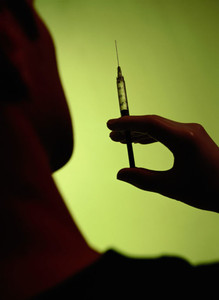Wider publication of bioequivalence, safety, or efficacy data to demonstrate the effectiveness of generic drug compounds may help to nullify the last remaining anti-generics argument: that generics do not achieve the same therapeutic standards as the original branded drug.
FDA is clear on the matter. It states, ‘Generic drugs are important options that allow greater access to health care for all Americans. They are copies of brand-name drugs and are the same as those brand-name drugs in dosage form, safety, strength, route of administration, quality, performance characteristics and intended use [1].’
‘Health care professionals and consumers can be assured that FDA-approved generic drug products have met the same rigid standards as the innovator drug. All generic drugs approved by FDA have the same high quality, strength, purity and stability as brand-name drugs. And, the generic manufacturing, packaging, and testing sites must pass the same quality standards as those of brand name drugs.’
Indeed, human bioequivalence studies have been required for generic drugs since the introduction of the Hatch-Waxman Act (Drug Price Competition and Patent Term Restoration Act) in 1984. In this context, bioequivalence refers to the absence of a significant difference in the rate at which or the extent to which the active ingredient in pharmaceutical equivalents becomes available at the site of drug action when two drug products are administered under similar experimental conditions in an appropriately designed study [2, 3].
In order for FDA to approve a generic drug, the 90% confidence intervals (CIs) must be between 80–125% for AUC (area under the time-concentration curve) and Cmax (peak plasma levels). This is the same standard used for different batches of branded drugs. Importantly, it does not mean that levels of the reference (branded) and test (generic) drug differ by 20% [3].
In 2009, to help prescribers understand the concept of bioequivalence, FDA undertook a retrospective analysis of 2,070 human studies conducted between 1996 and 2007. These studies compared the absorption of brand name and generic drugs, and each had been submitted to FDA to support the approval of a generic compound. The researchers found that the average difference in absorption between the generic and the branded drug was only 3.5% [4].
In addition, a 2008 study evaluated the results of 38 published clinical trials that compared cardiovascular generic drugs to their brand-name counterparts. There was no evidence that the brand-name cardiovascular drugs worked any better than the generic heart drugs [5].
Since the introduction of the 1984 Act, US generics market share has risen from 12% to 65% [2], yet many experts believe that this proportion could be increased if the misapprehension that generics are of inferior quality to branded drugs was quashed further. This, they believe, could be achieved if generics manufacturers published their data more readily, particularly as many of these data are already available from the FDA submission documentation.
Readers are reminded that all generics study data will be considered for publication in the recently launched GaBI Journal. Information for Authors can be found here.
References
1. Food and Drug Administration. Understanding generic drugs [homepage on the internet]. No date [updated 2010 Sept 27; cited 2012 Mar 9]. Available from: www.fda.gov/Drugs/ResourcesForYou/Consumers/BuyingUsingMedicineSafely/UnderstandingGenericDrugs/default.htm
2. Welage LS, Kirking DM, Ascione FJ, Gaither CA. Understanding the scientific issues embedded in the generic drug approval process. J Am Pharm Assoc (Wash). 2001 Nov-Dec;41(6):856-67.
3. PharmedOut.org. Georgetown University Medical Center. Department of Physiology and Biophysics. Generic drugs – prescribing sensibly [document on the internet]. 2008 Feb [cited 2012 Mar 9]. Available from: www.pharmedout.org/GenericDrugs.pdf.
4. Davit BM, et al. Comparing generic and innovator drugs: a review of 12 years of bioequivalence data from the United States Food and Drug Administration. Ann Pharmacother. 2009;43(10):1583-97.
5. Kesselheim AS, Misono AS, Lee JL, Stedman MR, Brookhart MA, Choudry NK, et al. Clinical equivalence of generic and brand-name drugs used in cardiovascular disease: a systematic review and meta-analysis. JAMA. 2008;300(21):2514-26.








 0
0











Post your comment